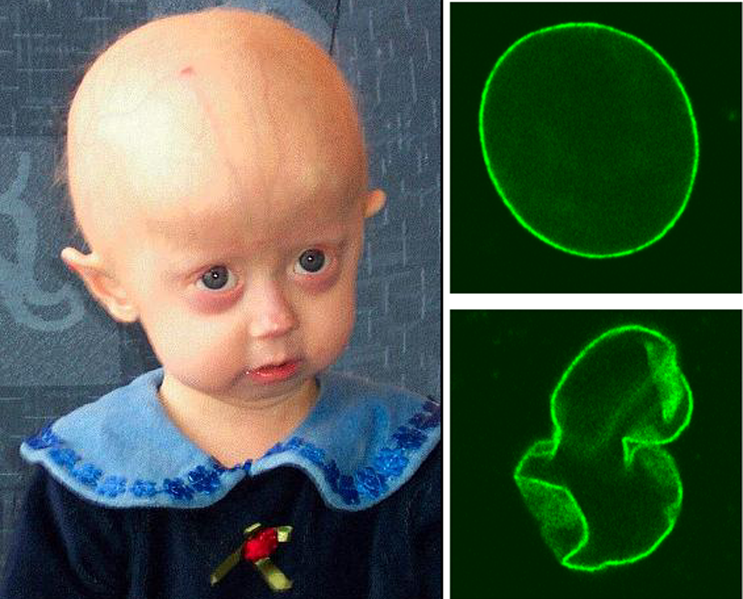Gene editing could help reverse fast ageing in progeria

Gene editing could be the solution to progeria, a genetic disease, characterized by extremely fast ageing.
Progeria causes fast ageing and premature death in people carrying a single-point mutation in the LMNA gene, which basically leads to the production of a toxic protein which slowly damages the cells, ageing the bodies. This simple misspelling of deadly consequences could be fixed by a new gene editing technique, base editing, in a mouse model of progeria as reported in the journal Nature 1 early this year.
Gene editing, specially with the molecular scissors CRISPR, has already been used to try and repair single point mutations responsible for a number of diseases, but while CRISPR can lead to unwanted changes to the DNA because of its need to cut the DNA, base editing does not require cutting the DNA, and therefore the editing is cleaner and more efficient.
In progeria mice treated with a base editing drug, after 6 weeks, the researchers found that 10-60% of the cells in organs like the heart, liver or bones were corrected, that is, the mutation was reversed.
Not only that, the physical effects were obvious as well: they seemed healthier, more energetic and had better posture. A phenotype that was maintained over time, showing stronger differences to untreated mice the longer time went on, up to the point where gene edited progeria mice survived twice as long as the untreated mice, about 1.5 years. A time not that different from the usual time span of healthy mice. Tissue and organ autopsy showed no big differences with healthy mice in either.
In vitro experiments on skin cells of human progeria patients showed that the editing was efficient in almost 90% of cases. However, there is still a long stretch to go from single cells and mice to full human. But be it as it may, gene editing offers now a real chance of healing for progeria.
References
- Koblan et al (2021) In vivo base editing rescues Hutchinson–Gilford progeria syndrome in mice Nature doi: 10.1038/s41586-020-03086-7 ↩
1 comment
[…] progeria, oso azkar zahartzea dakarrena. Prozesuari buelta emateko gai izango da edizio genetikoa? Gene editing could help reverse fast ageing in progeria, Rosa […]